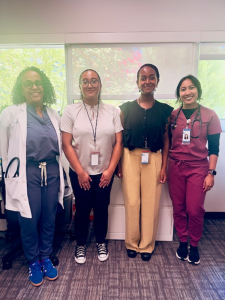PacMed & UW SHPEP Partner to Empower Future Health Leaders Through Clinical Shadowing

This summer, Pacific Medical Centers (PacMed) proudly partnered with the University of Washington’s Summer Health Professions Education Program (SHPEP) to provide immersive clinical shadowing experiences for aspiring health professionals.
The UW SHPEP is a free, six-week enrichment program designed to support college students from backgrounds underrepresented in the health professions. Hosted by the UW School of Medicine, Dentistry, and Public Health, the program offers academic enrichment in biology, chemistry, and population health, along with career development, wellness, and hands-on learning. Through a lens of social justice, SHPEP scholars explore the social determinants of health and health disparities while preparing for successful applications to health professions schools.
This initiative is made possible through the leadership of the Center for Workforce Inclusion and Healthcare System Equity (WIHSE), which coordinates the SHPEP program at UW and works to build a more diverse and equitable healthcare workforce.
At the heart of this summer’s clinical shadowing initiative is Dr. Sonja Maddox, a proud alum of both the UW School of Medicine and the MMEP/SHPEP program (Class of 1994). Dr. Maddox, who also serves as the Health Equity Clinic Lead at PacMed, played a pivotal role in making this partnership a reality—fostering connections that enabled 15 SHPEP students to shadow clinicians across PacMed.
The following clinicians generously participated in this summer’s shadowing initiative: Alexander Cantrell, MD, Soumya Choudhury, MD, Vik Dabhi, MD, PhD, Ari Gilmore, MD, Samantha Greaney, MD, Alexander Hamling, MD, Sonja Maddox, MD, Chad Marion, MD, Lisa Oswald, MD, Pathmaja Paramsothy, MD, Elham Rezvanian, MD, Christopher Smith, MD, and Mindy Zeitz-Chua, MD.
By opening its clinics to SHPEP scholars, PacMed is helping bridge the gap between classroom learning and real-world clinical experience. This partnership not only supports students’ academic and professional journeys but also strengthens the pipeline of diverse talent entering the health professions. It is a powerful example of how mentorship and community investment can shape the future of medicine—one student at a time.


